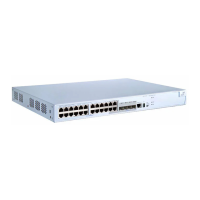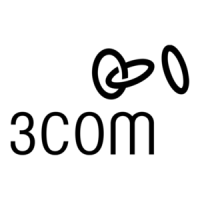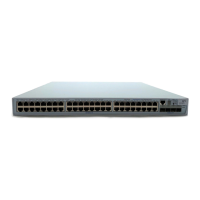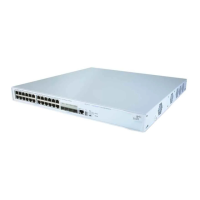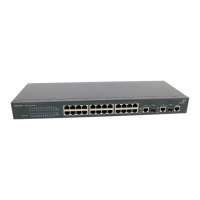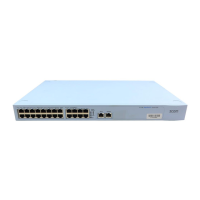Do you have a question about the 3Com 4500G and is the answer not in the manual?
Provides an overview of the 3Com Switch 4500G Series, its capabilities, and target market.
Provides an overview of the 3Com Switch 4500G Series, its capabilities, and target market.
Details the front and rear panel components and layout for 24-Port and 48-Port models.
Describes the front and rear panel layout and components for the Power over Ethernet (PoE) models.
Outlines the key technical specifications for all models in the Switch 4500G series.
Provides step-by-step instructions for securely mounting the switch in a standard 19-inch rack.
Emphasizes the critical need to read safety and regulatory information before installation or maintenance.
Explains the procedure for connecting the power supply and ensuring proper grounding for the switch.
Outlines the different ways to manage the switch, including CLI, SSH, Web, and SNMP.
Covers manual and automatic (DHCP) methods for configuring the switch's IP address.
Covers manual configuration of the switch's IP address, subnet mask, and gateway.
Lists the default user accounts and their access levels for switch management.
Helps diagnose issues based on the status and behavior of the switch's LED indicators.
Helps diagnose issues based on the status and behavior of the switch's LED indicators.
Provides solutions for common hardware failures, such as fan issues or SFP transceiver errors.
Offers troubleshooting steps for communication issues with the switch.
Describes the process of upgrading switch software using the Command Line Interface (CLI).
Explains how to upgrade software and firmware via the switch's Bootrom interface.
Highlights the importance of proper grounding for lightning protection and electromagnetic compatibility.
Warns about the necessity of changing default passwords for security.
Provides an overview of the 3Com Switch 4500G Series, its capabilities, and target market.
Provides an overview of the 3Com Switch 4500G Series, its capabilities, and target market.
Details the front and rear panel components and layout for 24-Port and 48-Port models.
Describes the front and rear panel layout and components for the Power over Ethernet (PoE) models.
Outlines the key technical specifications for all models in the Switch 4500G series.
Provides step-by-step instructions for securely mounting the switch in a standard 19-inch rack.
Emphasizes the critical need to read safety and regulatory information before installation or maintenance.
Explains the procedure for connecting the power supply and ensuring proper grounding for the switch.
Outlines the different ways to manage the switch, including CLI, SSH, Web, and SNMP.
Covers manual and automatic (DHCP) methods for configuring the switch's IP address.
Covers manual configuration of the switch's IP address, subnet mask, and gateway.
Lists the default user accounts and their access levels for switch management.
Helps diagnose issues based on the status and behavior of the switch's LED indicators.
Helps diagnose issues based on the status and behavior of the switch's LED indicators.
Provides solutions for common hardware failures, such as fan issues or SFP transceiver errors.
Offers troubleshooting steps for communication issues with the switch.
Describes the process of upgrading switch software using the Command Line Interface (CLI).
Explains how to upgrade software and firmware via the switch's Bootrom interface.
Highlights the importance of proper grounding for lightning protection and electromagnetic compatibility.
Warns about the necessity of changing default passwords for security.


